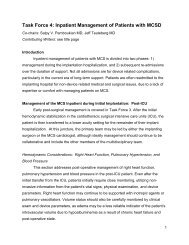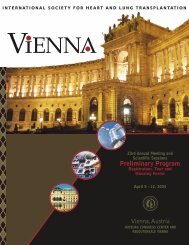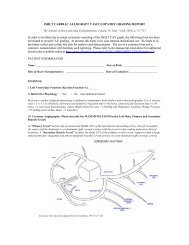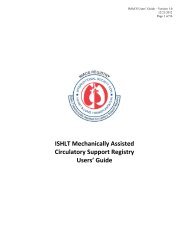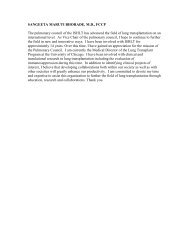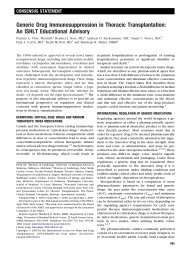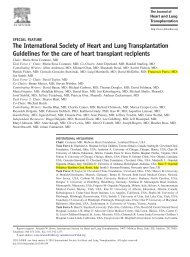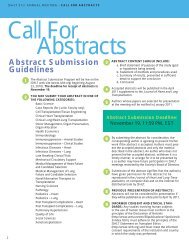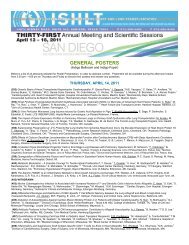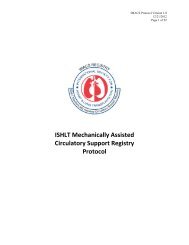Guidelines for Patient Care after Heart Transplantation
Guidelines for Patient Care after Heart Transplantation
Guidelines for Patient Care after Heart Transplantation
You also want an ePaper? Increase the reach of your titles
YUMPU automatically turns print PDFs into web optimized ePapers that Google loves.
Scope of topic 1<br />
• Continuous hemodynamic monitoring and availability of transesophageal echo<br />
– early recognition of the complications that may occur <strong>after</strong> heart<br />
transplantation e.g. primary graft failure and right ventricular failure, either as a<br />
manifestation of PGF or secondary to an increased PVR.<br />
• Donor and operative factors that may impact of post-operative management<br />
• Pharmacological Therapies in the Early Postoperative Period:<br />
– Inotropes.<br />
– Role of nitric oxide<br />
– Management of Volume Status and Hemodynamics<br />
– Metabolic management (Acidosis, glycemic management),<br />
• Non-Pharmacological Therapies in the Early Postoperative Period<br />
– Pacing.<br />
– Crucial role of renal function as indication of an adequate circulation,<br />
indications <strong>for</strong> the use of hemofiltration and other RRT.<br />
– Use of VADs to manage PGF<br />
• Documentation and communication within the multidisciplinary team.<br />
• Role of therapeutic targets<br />
• The use of ECMO to treat primary graft failure in pediatric heart transplantation.<br />
• Other ‘surgical’ complications, hemorrhage, tamponade<br />
• Coagulopathy<br />
• Cross match results and hyperacute rejection (HLA and ABO incompatibility)<br />
• Management of ABO ‘incompatible’ pediatric transplants (inc. blood products)



